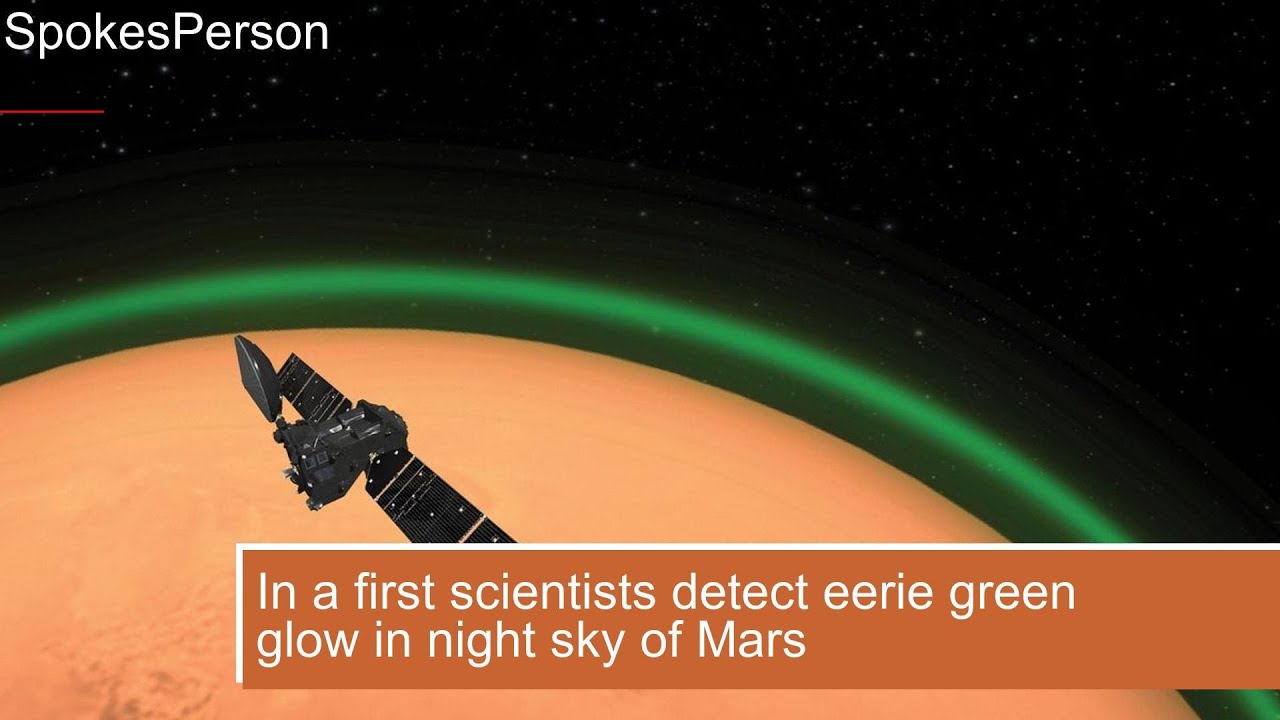Introduction:
The Martian night sky has long captivated the imaginations of scientists and space enthusiasts alike. However, recent observations by NASA’s Mars rovers and orbiters have unveiled a surprising and captivating phenomenon – an eerie green glow permeating the Red Planet’s nocturnal atmosphere. This celestial spectacle has left scientists intrigued and eager to unravel the mysteries behind Mars’ unexpected luminescence.
The Green Glow Phenomenon:
The source of the Martian green glow is believed to be the result of interactions between gases in the planet’s atmosphere and charged particles from the Sun. This phenomenon, known as nightglow, is not unique to Mars but has been observed on Earth and other celestial bodies. On Mars, the primary contributor to this phenomenon is thought to be the interaction between carbon dioxide and solar radiation.
Scientists believe that sunlight breaks down carbon dioxide molecules into individual atoms and releases energy in the process. When these atoms recombine at night, they release this stored energy as a faint glow. The specific shade of green is attributed to the electronic transitions of oxygen atoms in the carbon dioxide molecules.
Recent Observations:
The green glow on Mars was initially detected by the Mars Curiosity Rover and later confirmed by orbiters like MAVEN (Mars Atmosphere and Volatile Evolution). These observations have provided researchers with valuable insights into the Martian atmosphere and its dynamic processes.
One intriguing aspect is the variability in the intensity of the glow, which seems to be influenced by seasonal and environmental factors. As Mars experiences different seasons and solar activities, the nightglow becomes more pronounced or fades, creating a mesmerizing dance of light in the Martian night sky.
Scientific Implications:
Studying the Martian nightglow is more than just a captivating spectacle; it offers valuable information about the composition and behavior of the planet’s atmosphere. By understanding the dynamics of the nightglow, scientists can gain insights into the density and distribution of key atmospheric components like carbon dioxide and oxygen.
Additionally, these observations can aid in the development of more accurate models for predicting Martian weather patterns and climate changes. The interplay between solar radiation and the Martian atmosphere holds clues to the planet’s history and its potential habitability, making this phenomenon a crucial puzzle piece in our quest to comprehend the mysteries of Mars.
Looking Forward:
As technology advances and new missions are planned for Mars exploration, scientists are eager to delve deeper into the mysteries of the Martian nightglow. Future missions, such as the upcoming James Webb Space Telescope, promise to provide even more detailed observations, allowing researchers to refine their understanding of this captivating phenomenon.
The Martian night sky, with its eerie green glow, serves as a constant reminder of the dynamic and enigmatic nature of our neighboring planet. As scientists continue to unlock the secrets hidden within the Red Planet’s atmosphere, we can only anticipate more revelations that will further fuel our fascination with the mysteries of Mars.



